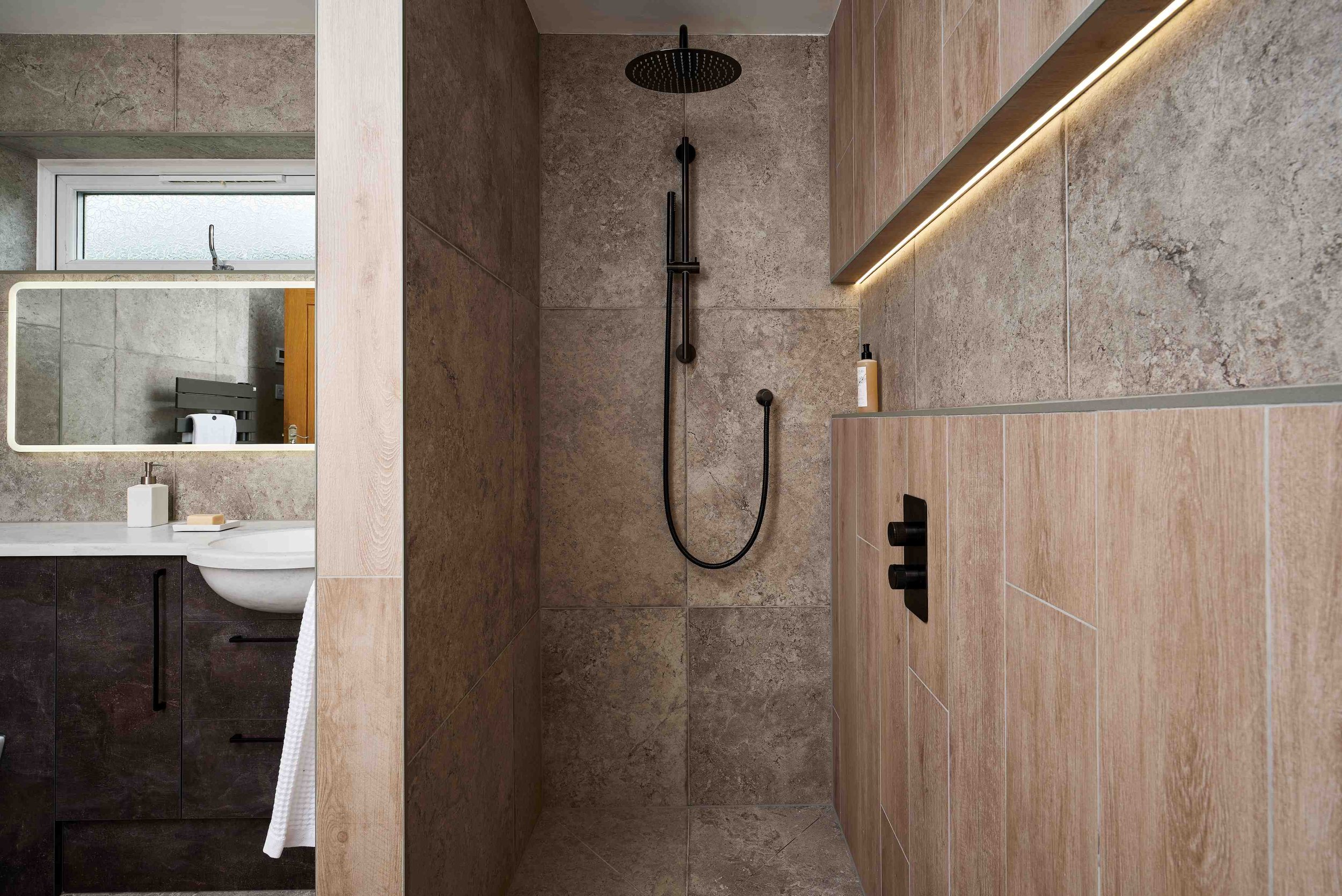Designer advice: Shower room Q&A
Senior Designer Jo from Ripples London answers your questions about designing, maintaining and updating shower rooms.
Q. What’s the difference between a wet room and a shower room?
A wet room is where the whole room or showering area is fully open and designed to get wet, whereas a shower room is simply a room in your property which contains a shower – either open or enclosed.
“I like to see a good mixture of different colours, textures and colours in a shower room or wetroom. Shower rooms don’t need to be 2 dimensional or flat…your home is an expression of yourself and your tastes so there’s no reason why your bathroom can’t be too!”
-Jo, Senior Designer Ripples London
Q. Are wet rooms still a popular choice?
A.Wet rooms are still very popular but more and more of our clients want to contain the water spreading to the rest of the room by having glass panels installed. Having a shower space without a screen at all is quite uncommon in the UK as space is usually at a premium and clients want to avoid getting all of their bathroom belongings wet each time they have a shower.
Q. How can I update an existing wet room or shower room?
A.Jot down what improvements you would like to make to the room in terms of look and functionality. These can be simple updates such as having a professional in to clean up the tiles and re-silicone, or adding new accessories such as mirrors or shelving. Pinterest and Instagram are brilliant sources of inspiration and a visit to a showroom can be great at giving you ideas and seeing what new products are available.
Q. How do I work in storage into a small shower room?
A.An easy place to add storage is underneath the washbasin; these deep drawers are great for hiding away cleaning products and shampoo bottles. If you have internal stud walls, space can be maximised by installing a recessed mirror cabinet which not only adds extra storage but also lighting and a charging socket (some even have speakers!). In showering areas, you can create recesses in the wall which is a great place to showcase your most prized bathroom possessions or accessorise with house plants.
If space allows above the WC or near the basin, some floating shelves can be a nice way to add in some additional open storage even if it is just for that nice candle!
Q.What tips would you give for incorporating lighting in a shower room?
A.Lighting doesn’t have to stay on the ceiling.; use it in other places like under the basin and in recesses to add that different dimension. I also recommend having flexibility to change the colour from warm to cool white for your use and time of day. You can explore options for dimmable lighting so you create different moods depending on how you’re using the room or even how you feel.
Q.What tips would you give for choosing brassware for your shower room?
A.Know your water pressure - this is key to ensure the fittings are suitable and will give you the experience you want when showering. Depending on your system you can fit a pump to give you a higher pressure, speak with your designer and install about this.
Think about what type of showering experience you would like to have. Do you want to feel the force of water or want to get drenched? This will allow you to choose the correct shower fittings.
Colours - doesn’t just have to come through the tiles. You can express yourself through coloured brassware too. With special finish brassware, consider lead time as they can be anywhere between 4 - 14 weeks.
Q.What makes a great shower room?
A.Any well-designed shower room can be a great room as long as it reflects your style and wishes. For me, everything has to be well considered and finished off to a high standard. Both of these will always leave you with a smile on your face after using the room.
For more bathroom advice from our team of specialist bathroom designers, download or request a copy of our free Style Guide.
Here, we ask Faye, Senior Designer at Ripples Bournemouth to give her advice on the key areas tech can be incorporated within bathroom design.







